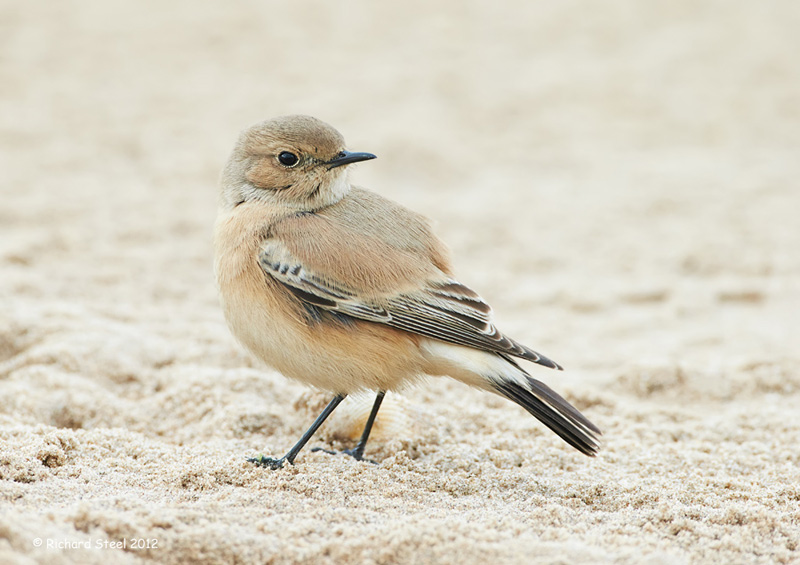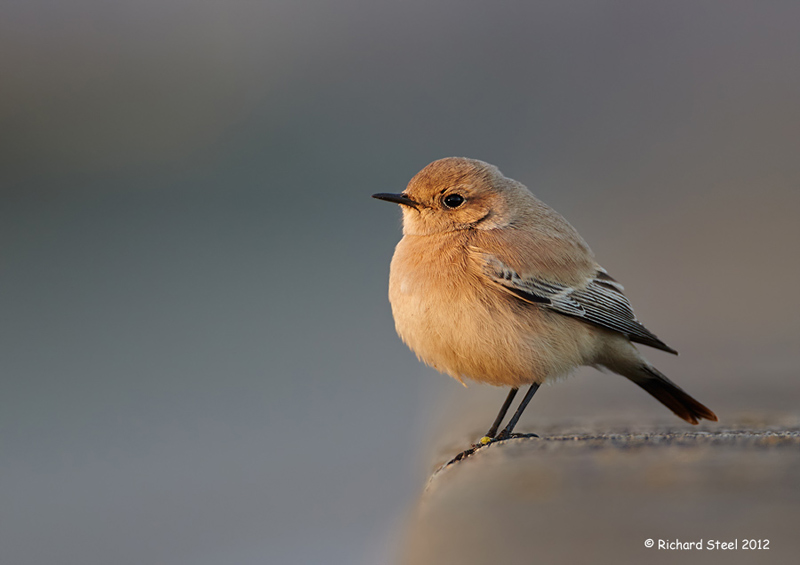Lost in Rhyl
Reports recently appeared on the Internet of a very late Wheatear on a beach at Rhyl in North Wales. Further investigation by birdwatcher revealed this to be a female Desert Wheatear which was at least a couple of thousand miles away from where it should have been in North Africa. I was in two minds whether to visit the bird for a couple of reasons. Firstly I tend to avoid rare birds as I don't like all the commotion from the masses descending upon them. Secondly this was a female bird which from the initial photographs being posted on the Internet did not appear to be very much different in appearance from a female Northern Wheatear. It was easy to see how the person who first found it was confused by its identity.
In the end I decided I would pay it a visit but would time my arrival for first light in an attempt to avoid the crowds that would no doubt arrive later in the day to glimpse this small vagrant bird. Information was very good as to its location and I knew I was in the right place by seeing two people with tripods already present when I arrived and where I expected the bird to be. Finding rare birds is generally quite easy as you just look for the crowds or gathering of tripods.
The bird was perched on the edge of the sea defences wall when I arrived being beautifully lit by the golden glow of the early morning winter sun. These first few images turned out to be my favourites from my short session and to keep you in suspense :) I will show these at the end of this post. My first impressions of the bird were that it appeared slightly smaller and more 'dumpy' than a Northern Wheatear. However, it its rotund appearance may have due to it being fluffed up and not surprisingly given the stiff icy northerly wind blowing in off the sea. It must have felt a long way from its home in the warm sunny climate of North Africa.
A cyclist came through and the bird flew over the wall and landed on the beach below where it stayed for the rest of my visit. Unfortunately due to the height of the wall and low angle of the sun there was no chance of getting any further sunlight on the bird to illuminates its pale sandy orange hues.
I brought a small box of mealworms with me, figuring the bird would probably welcome a free hand out which would hopefully also help build up its energy reserves that would be needed for it to return to where it should be. They appeared to be gratefully received as the bird almost instantly started feeding on them. However, I expect many of these lost birds sadly perish and never make their way back to where they should be. The cold north Wales beach certainly struck me as a relatively inhospitable place for the bird which spent part of the time using a large boulder as a wind break.
The crowds began to appear and I decided I had enough photographs of the bird and it was time to depart. A scattered some more mealworms before I left. A couple of days later the bird also disappeared and I would like to optimistically think was making its way southward after its brief stopover and being lost in Rhyl.
As promised my favourite photograph from the session was the bird glowing on top of the sea wall when I first arrived.
Tuesday, December 04, 2012
Subscribe to:
Post Comments (Atom)



















4 comments:
I had already heard of this bird on Facebook, and as I said then, I shall say now...sometimes nature is just plain cruel, and yet...you got some amazingly brilliant images and yes, the last one is awesome! I pray that this lovely makes it to where it shall thrive~
Muy bonita la última foto con la luz cálida...
Perfect depth of field on your last shot. Very nice.
These are some amazing pictures. Glad you've paid attention to detail and what it takes to take a good picture.
Post a Comment